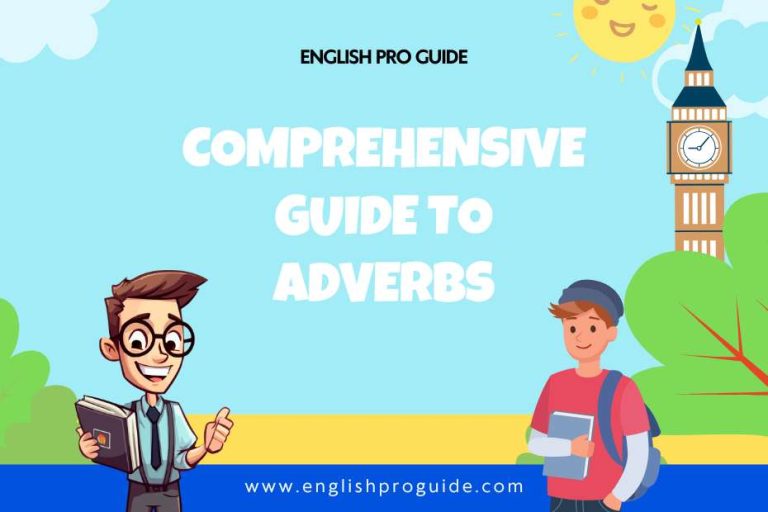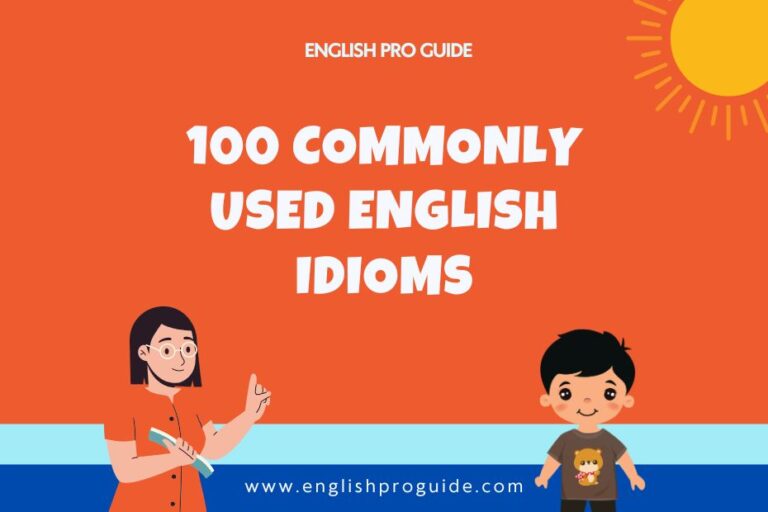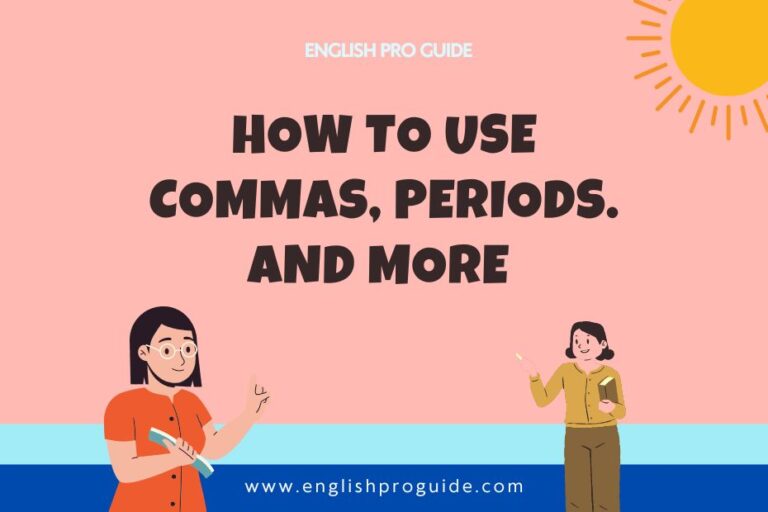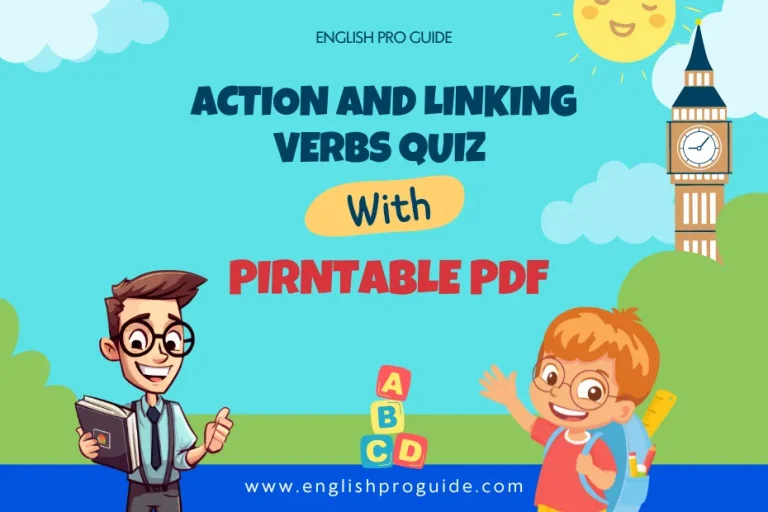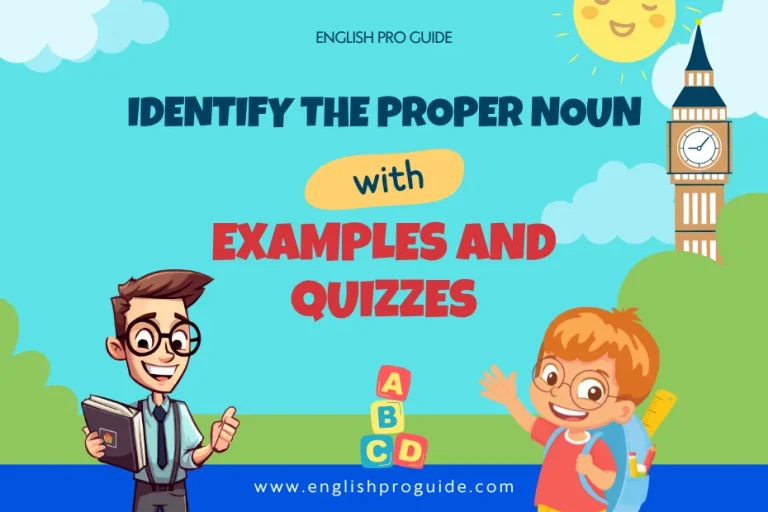Why Should You Use Structure Words in Your Writing?
Prepositions (e.g., in, on, at) Conjunctions (e.g., and, but, because) Determiners (e.g., the, a, some) Pronouns (e.g., he, she, it) Auxiliary Verbs (e.g., is, do, has).
When learning English, you’ll often come across the term “structure words.” These are essential building blocks of the language, helping to create meaningful and grammatically correct sentences.
But what exactly are structure words, and why are they so important? Let’s break it down, provide some examples, and give you a handy list of 50 structure words to enhance your understanding.
What Are Structure Words?
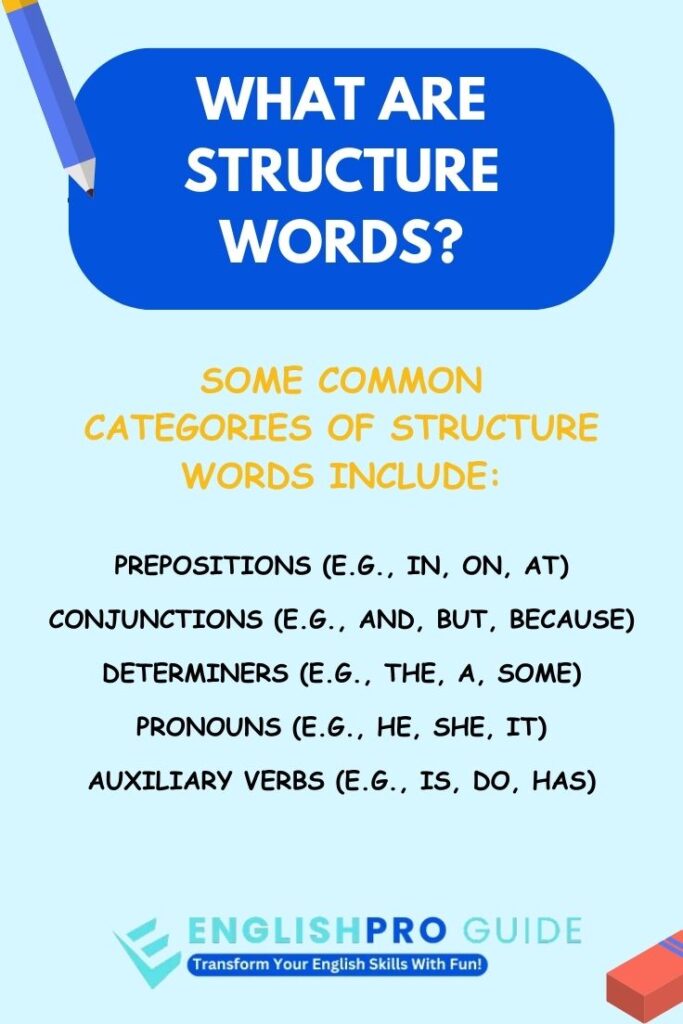
Structure words, also known as “function words,” are words that do not carry much meaning on their own but play a crucial role in forming grammatically correct sentences.
They are the glue that holds your sentences together, connecting the more meaningful content words—such as nouns, verbs, and adjectives.
Some common categories of structure words include:
- Prepositions (e.g., in, on, at)
- Conjunctions (e.g., and, but, because)
- Determiners (e.g., the, a, some)
- Pronouns (e.g., he, she, it)
- Auxiliary Verbs (e.g., is, do, has)
Unlike content words, whose meanings are clear and specific, structure words serve a grammatical function. For example:
- Structure word: “I am going to the park.” (The word “to” connects the action to the place but doesn’t provide specific meaning.)
- Content word: “I am going to the park.” (The word “park” provides specific meaning.)
Why Are Structure Words Important?
Structure words are like the framework of a house—they don’t grab attention the way furniture does, but without them, everything would collapse. Here’s why they matter:
- Grammatical Accuracy – They help form correct sentences and convey relationships between ideas.
- Smooth Flow – Structure words guide readers and listeners, making the language easier to follow.
- Clarity – They clarify how different parts of the sentence fit together, providing context and meaning.
For example, compare these sentences:
- “I like apple.”
- “I like the apple.”
The structure word “the” clarifies which apple you’re referring to, making the sentence clearer.
Read More: 200+ Sentences with “Sh” “Ch” Words for Easy Practicing
Categories of Structure Words and Examples
Below are the main types of structure words, broken into their respective categories:
1. Prepositions
Prepositions link nouns, pronouns, and phrases to other words, showing direction, location, or time.
- Examples: in, on, at, to, by, for, with, from, about, under
Sentence Example: The book is on the table.
2. Conjunctions
Conjunctions connect words, phrases, or clauses.
- Examples: and, but, because, although, however, while, if, or, so, yet
Sentence Example: I wanted to play outside, but it started raining.
3. Determiners
Determiners introduce a noun and specify something about it (e.g., quantity, ownership, definiteness).
- Examples: the, a, an, some, each, every, many, few, this, those
Sentence Example: This car is very expensive.
4. Pronouns
Pronouns replace nouns to avoid repetition.
- Examples: he, she, it, they, we, who, what, her, his, ours
Sentence Example: They are going to the concert tonight.
5. Auxiliary Verbs
Auxiliary verbs (helping verbs) are used with main verbs to form tenses, moods, and voices.
- Examples: is, am, are, was, were, be, being, been, do, does, did, have, has, had
Sentence Example: She is reading a book.
6. Articles
Articles are a specific type of determiner that signal whether something is definite or indefinite.
- Examples: the, a, an
Sentence Example: He ate an apple.
7. Interjections
While not always thought of as structure words, interjections can provide quick context or emotion.
- Examples: oh, wow, hey, um, ah
Sentence Example: Wow, that’s amazing!
8. Modals
Modals indicate necessity, possibility, or ability.
- Examples: can, could, may, might, must, shall, should, will, would
Sentence Example: You should call her today.
Read More: Hundred Examples Of 3 Syllable Words List & Pdf
50 Examples of Structure Words
To help you recognize structure words, here’s a list of 50 commonly used examples:
- The
- A
- An
- On
- At
- By
- To
- For
- With
- From
- And
- But
- Or
- Yet
- If
- Because
- Although
- While
- He
- She
- It
- They
- We
- Who
- What
- Some
- Many
- Few
- Each
- Every
- This
- That
- Those
- Have
- Has
- Had
- Do
- Does
- Did
- Is
- Am
- Are
- Was
- Were
- Be
- Being
- Been
- Can
- Should
- Must
Practice Using Structure Words
Now that you’ve explored what structure words are and seen plenty of examples, it’s time to practice! Try writing your own sentences and focus on identifying the structure words. For instance:
- “She enjoys studying in the library.”
Notice how “She” (pronoun), “in” (preposition), and “the” (article) work together to frame the content words “enjoys,” “studying,” and “library.”
Final Thoughts
Structure words may not carry the weight of meaning on their own, but they are essential for crafting clear and effective communication in English.
Whether you’re reading, writing, or speaking, mastering these words will take your language skills to the next level.
Looking for more resources to sharpen your English skills? Visit EnglishProGuide.com for grammar tips, quizzes, and articles that can help you become a language pro. Happy learning!

